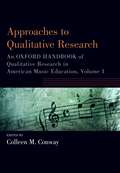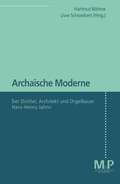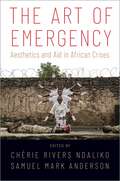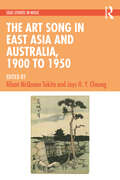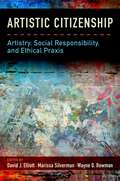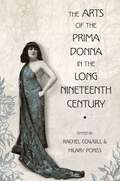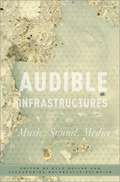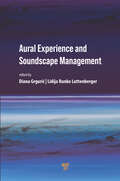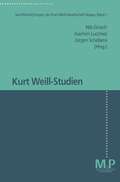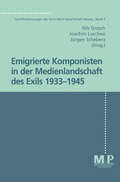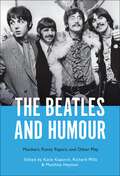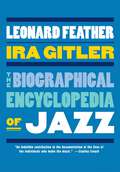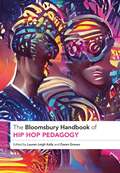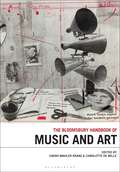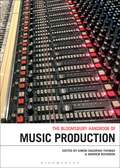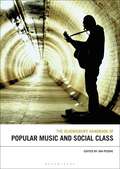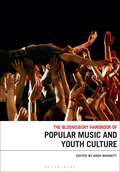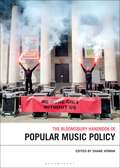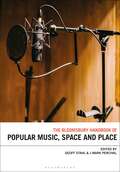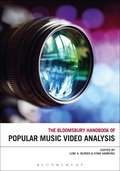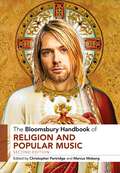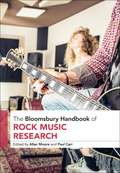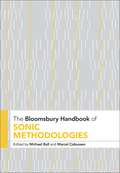- Table View
- List View
Approaches to Qualitative Research: An Oxford Handbook of Qualitative Research in American Music Education, Volume 1 (Oxford Handbooks)
In this newly updated collection, a diverse roster of scholars place qualitative research in music education into its historical context, while providing readers with epistemological foundations and theoretical frameworks that can be applied to a range of teaching and learning contexts. Ethnography, phenomenology, case study, narrative, and practitioner inquiry are explored, as well as the emergence of mixed methods research in music education, rounding out a comprehensive overview of these qualitative research practices. Filled with cogent and practical insights from wide-ranging theoretical discourses, Approaches to Qualitative Research is a go-to guidebook for beginning research students and advanced practitioners alike. Approaches to Qualitative Research is the first of three paperback volumes derived from the original Oxford Handbook of Qualitative Research in American Music Education, which outlines the history of qualitative research in music education and explores the contemporary use of qualitative approaches in examining issues related to music teaching and learning.
Arabesque without End: Across Music and the Arts, from Faust to Shahrazad (Music and Visual Culture)
Featuring multidisciplinary research by an international team of leading scholars, this volume addresses the contested aspects of arabesque while exploring its penchant for crossing artistic and cultural boundaries to create new forms. Enthusiastically imported from its Near Eastern sources by European artists, the freely flowing line known as arabesque is a recognizable motif across the arts of painting, music, dance, and literature. From the German Romantics to the Art Nouveau artists, and from Debussy’s compositions to the serpentine choreographies of Loïe Fuller, the chapters in this volume bring together cross-disciplinary perspectives to understand the arabesque across both art historical and musicological discourses.
The Art of Emergency: Aesthetics and Aid in African Crises
The Art of Emergency charts the maneuvers of art through conflict zones across the African continent. Advancing diverse models for artistic and humanitarian alliance, the volume urges conscientious deliberation on the role of aesthetics in crisis through intellectual engagement, artistic innovation, and administrative policy. Across Africa, artists increasingly turn to NGO sponsorship in pursuit of greater influence and funding, while simultaneously NGOs-both international and local-commission arts projects to buttress their interventions and achieve greater reach and marketability. The key values of artistic expression thus become "healing" and "sensitization," measured in turn by "impact" and "effectiveness." Such rubrics obscure the aesthetic complexities of the artworks and the power dynamics that inform their production. Clashes arise as foreign NGOs import foreign aesthetic models and preconceptions about their efficacy, alongside foreign interpretations of politics, medicine, psychology, trauma, memorialization, and so on. Meanwhile, each community embraces its own aesthetic precedents, often at odds with the intentions of humanitarian agencies. The arts are a sphere in which different worldviews enter into conflict and conversation. To tackle the consequences of aid agency arts deployment, volume editors Samuel Mark Anderson and Chérie Rivers Ndaliko assemble ten case studies from across the African continent employing multiple media including music, sculpture, photography, drama, storytelling, ritual, and protest marches. Organized under three widespread yet under-analyzed objectives for arts in emergency-demonstration, distribution, and remediation-each case offers a different disciplinary and methodological perspective on a common complication in NGO-sponsored creativity. By shifting the discourse on arts activism away from fixations on message and toward diverse investigations of aesthetics and power negotiations, The Art of Emergency brings into focus the conscious and unconscious configurations of humanitarian activism, the social lives it attempts to engage, and the often-fraught interactions between the two.
The Art Song in East Asia and Australia, 1900 to 1950 (SOAS Studies in Music)
This book explores art song as an emblem of musical modernity in early twentieth-century East Asia and Australia. It appraises the lyrical power of art song – a solo song set to a poem in the local language in Western art music style accompanied by piano – as a vehicle for creating a localized musical identity, while embracing cosmopolitan visions. The study of art song reveals both the tension and the intimacy between cosmopolitanism and local politics and culture. In 20 essays, the book includes overviews of art song development written by scholars from each of the five locales of Japan, Korea, China, Taiwan, and Australia, reflecting perspectives of both established narratives and uncharted historiography. The Art Song in East Asia and Australia, 1900 to 1950 proposes listening to the songs of our neighbours across cultural and linguistic boundaries. Recognizing the colonial constraints experienced by art song composers, it hears trans-colonial expressions addressing musical modernity, both in earlier times and now. Readers of this volume will include musicologists, ethnomusicologists, singers, musicians, and researchers concerned with modernity in the fields of poetry and history, working within local, regional, and transnational contexts.
Artistic Citizenship: Artistry, Social Responsibility, and Ethical Praxis
This first-of-its-kind compendium unites perspectives from artists, scholars, arts educators, policymakers, and activists to investigate the complex system of values surrounding artistic-educational endeavors. Addressing a range of artistic domains-including music, dance, theater, visual arts, film, and poetry-contributors explore and critique the conventions that govern our interactions with these practices. Artistic Citizenship focuses on the social responsibilities and functions of amateur and professional artists and examines ethical issues that are conventionally dismissed in discourses on these topics. The questions this book addresses include: How does the concept of citizenship relate to the arts? What sociocultural, political, environmental, and gendered "goods" can artistic engagements create for people worldwide? Do particular artistic endeavors have distinctive potentials for nurturing artistic citizenship? What are the most effective strategies in the arts to institute change and/or resist local, national, and world problems? What obligations do artists and consumers of art have to facilitate relationships between the arts and citizenship? How can artistic activities contribute to the eradication of adverse 'ism's? A substantial accompanying website features video clips of "artivism" in action, videotaped interviews with scholars and practitioners working in a variety of spaces and places, a blog, and supplementary resources about existing and emerging initiatives. Thoroughly researched and engagingly written, Artistic Citizenship is an essential text for artists, scholars, policymakers, educators, and students.
The Arts of the Prima Donna in the Long Nineteenth Century
Female characters assumed increasing prominence in the narratives of nineteenth- and early twentieth-century opera. And for contemporary audiences, many of these characters--and the celebrated women who played them--still define opera at its finest and most searingly affective, even if storylines leave them swooning and faded by the end of the drama. The presence and representation of women in opera has been addressed in a range of recent studies that offer valuable insights into the operatic stage as cultural space, focusing a critical lens at the text and the position and signification of female characters. Moving that lens onto the historical, The Arts of the Prima Donna in the Long Nineteenth Century sheds light on the singers who created and inhabited these roles, the flesh-and-blood women who embodied these fabled "doomed women" onstage before an audience. Editors Rachel Cowgill and Hilary Poriss lead a cast of renowned contributors in an impressive display of current approaches to the lives, careers, and performances of female opera singers. Essential theoretical perspectives reflect several broad themes woven through the volume-cultures of celebrity surrounding the female singer; the emergence of the quasi-mythical figure of the diva; explorations of the intricate and sundry arts associated with the prima donna, and with her representation in other media; and the diversity and complexity of contemporary responses to her. The prima donna influenced compositional practices, determined musical and dramatic interpretation, and affected management decisions about the running of the opera house, content of the season, and employment of other artists--a clear demonstration that her position as "first woman" extended well beyond the boards of the operatic stage itself. The Arts of the Prima Donna in the Long Nineteenth Century is an important addition to the collections of students and researchers in opera studies, nineteenth-century music, performance and gender/sexuality studies, and cultural studies, as well as to the shelves of opera singers and enthusiasts.
Audible Infrastructures (Critical Conjunctures in Music and Sound)
Our day-to-day musical enjoyment seems so simple, so easy, so automatic. Songs instantly emanate from our computers and phones, at any time of day. The tools for playing and making music, such as records and guitars, wait for us in stores, ready for purchase and use. And when we no longer need them, we can leave them at the curb, where they disappear effortlessly and without a trace. These casual engagements often conceal the complex infrastructures that make our musical cultures possible. Audible Infrastructures takes readers to the sawmills, mineshafts, power grids, telecoms networks, transport systems, and junk piles that seem peripheral to musical culture and shows that they are actually pivotal to what music is, how it works, and why it matters. Organized into three parts dedicated to the main phases in the social life and death of musical commodities resources and production, circulation and transmission, failure and waste this book provides a concerted archaeology of music's media infrastructures. As contributors reveal the material-environmental realities and political-economic conditions of music and listening, they open our eyes to the hidden dimensions of how music is made, delivered, and disposed of. In rethinking our responsibilities as musicians and listeners, this book calls for nothing less than a reconsideration of how music comes to sound.
Aural Experience and Soundscape Management
Since technological progress is characterized by the dual effects, positive and negative, it is precisely by sustaining the balance between such binaries that ecologically responsible resource management is restored as a solution for excessive human impact on the environment. Sound and music became relevant from the perspective of management, within the meaning of controlling their negative effects on human beings and their environment as well as utilizing them for meeting human needs. This book integrates the fields of technology, humanities, and social sciences and defines the challenges of noise control from the perspective of acoustic ecology. It discusses the concept of acoustic ecology applied to evoke sound and music management and design solutions for well-being. It will be equally useful for students of electrical engineering, music, and economics; equally challenging to those with a particular prior knowledge and practice; and as much as comprehensive and stimulative for those who are barely embarking upon a new adventure.
The Beatles and Humour: Mockers, Funny Papers, and Other Play
The Beatles are known for cheeky punchlines, but understanding their humor goes beyond laughing at John Lennon's memorable “rattle your jewelry” dig at the Royal Variety Performance in 1963. From the beginning, the Beatles' music was full of wordplay and winks, guided by comedic influences ranging from rhythm and blues, British radio, and the Liverpool pub scene. Gifted with timing and deadpan wit, the band habitually relied on irony, sarcasm, and nonsense. Early jokes revealed an aptitude for improvisation and self-awareness, techniques honed throughout the 1960s and into solo careers. Experts in the art of play, including musical experimentation, the Beatles' shared sense of humor is a key ingredient to their appeal during the 1960s- and to their endurance.The Beatles and Humour offers innovative takes on the serious art of Beatle fun, an instrument of social, political, and economic critique. Chapters also situate the band alongside British and non-British predecessors and collaborators, such as Billy Preston and Yoko Ono, uncovering diverse components and unexpected effects of the Beatles' output.
The Biographical Encyclopedia of Jazz
Do you want to know when Duke Ellington was king of The Cotton Club? Have you ever wondered how old Miles Davis was when he got his first trumpet? From birth dates to gig dates and from recordings to television specials, Leonard Feather and Ira Gitler have left no stone unturned in their quest for accurate, detailed information on the careers of 3.300 jazz musicians from around the world. We learn that Duke Ellington worked his magic at The Cotton Club from 1927 to 1931, and that on Miles Davis's thirteenth birthday, his father gave him his first trumpet. Jazz is fast moving, and this edition clearly and concisely maps out an often dizzying web of professional associations. We find, for instance, that when Miles Davis was a St. Louis teenager he encountered Charlie Parker and Dizzy Gillespie for the first time. This meeting proved fateful, and by 1945 a nineteen-year-old Davis had left Juilliard to play with Parker on 52nd Street. Knowledge of these professional alliances, along with the countless others chronicled in this book, are central to tracing the development of significant jazz movements, such as the "cool jazz" that became one of Miles Davis's hallmarks. Arranged alphabetically according to last name, each entry of this book chronologically lists the highlights of every jazz musician's career. Highly accessible and vigorously researched, The Biographical Encyclopedia of Jazz is, quite simply, the most comprehensive jazz encyclopedia available.
Black Music in Britain in the 21st Century (Liverpool Studies in the Politics of Popular Culture)
Since the turn of the 21st century, there have been several genres birthed from or nurtured in Black Britain: funky & tribal House, Afrobeats, Grime, Afro Swing, UK Drill, Road Rap, Trap etc. This pioneering book brings together diverse diasporan sounds in conversation. A valuable resource for those interested in the study of 21st century Black music and related cultures in Britain, this book goes incorporates the significant Black Atlantean, global interactions within Black music across time and space. It examines and proposes theoretical approaches, contributing to building a holistic appreciation of 21st century Black British music and its multidimensional nature. This book proffers an academically curated, rigorous, holistic view of Black British music in the 21st century. Drawing from pioneering academics in the emerging field and industry professionals, the book will serve academic theory, as well as the views, debates and experiences of industry professionals in a complementary style that shows the synergies between diasporas and interdisciplinary conversations. The book is interdisciplinary. It draws from sociology, musicology and the emerging digital humanities fields, to make its arguments and develop a multi-disciplinary perspective about Black British music in the 21st century.
The Bloomsbury Handbook of Hip Hop Pedagogy (Bloomsbury Handbooks)
The Bloomsbury Handbook of Hip Hop Pedagogy is the first reference work to cover the theory, history, research methodologies, and practice of Hip Hop pedagogy. Including 20 chapters from activist-oriented and community engaged scholars, the handbook provides perspectives and studies from across the world, including Brazil, the Caribbean, Scandinavia, and the USA. Organized into four topical sections focusing on the history and cultural roots of Hip Hop; theories and research methods in Hip Hop pedagogy; and Hip Hop pedagogy in practice, the handbook offers theoretical, analytical, and pedagogical insights emerging across sociology, literacy, school counselling and youth organizing. The chapters reflect the impact of critical Hip Hop pedagogies and Hip Hop-based research for educators and scholars interested in radical, transformative approaches to education. Ultimately, the many voices included in the handbook show that Hip Hop pedagogy is a humanizing and emancipatory approach which is redefining the purposes and practices of education.
The Bloomsbury Handbook of Music and Art (Bloomsbury Handbooks)
This volume brings together prominent scholars, artists, composers, and directors to present the latest interdisciplinary ideas and projects in the fields of art history, musicology and multi-media practice. Organized around ways of perceiving, experiencing and creating, the book outlines the state of the field through cutting-edge research case studies. For example, how does art-music practice / thinking communicate activist activities? How do socio-economic and environmental problems affect access to heritage? How do contemporary practitioners interpret past works and what global concerns stimulate new works? In each instance, examples of cross or inter-media works are not thought of in isolation but in a global historical context that shows our cultural existence to be complex, conflicted and entwined. For the first time cross-disciplinary collaborations in ethnomusicology-anthropology, ecomusicology-ecoart-ecomuseology and digital humanities for art history, musicology and practice are prioritized in one volume.
The Bloomsbury Handbook of Music Production (Bloomsbury Handbooks)
The Bloomsbury Handbook of Music Production provides a detailed overview of current research on the production of mono and stereo recorded music. The handbook consists of 33 chapters, each written by leaders in the field of music production. Examining the technologies and places of music production as well the broad range of practices – organization, recording, desktop production, post-production and distribution – this edited collection looks at production as it has developed around the world. In addition, rather than isolating issues such as gender, race and sexuality in separate chapters, these points are threaded throughout the entire text.
The Bloomsbury Handbook of Popular Music and Social Class (Bloomsbury Handbooks)
The Bloomsbury Handbook of Popular Music and Social Class is the first extensive analysis of the most important themes and concepts in this field. Encompassing contemporary research in ethnomusicology, sociology, cultural studies, history, and race studies, the volume explores the intersections between music and class, and how the meanings of class are asserted and denied, confused and clarified, through music. With chapters on key genres, traditions, and subcultures, as well as fresh and engaging directions for future scholarship, the volume considers how music has thought about and articulated social class. It consists entirely of original contributions written by internationally renowned scholars, and provides an essential reference point for scholars interested in the relationship between popular music and social class.
The Bloomsbury Handbook of Popular Music and Youth Culture (Bloomsbury Handbooks)
The Bloomsbury Handbook of Popular Music and Youth Culture provides a comprehensive and fully up-to-date overview of key themes and debates relating to the academic study of popular music and youth culture. While this is a highly popular and rapidly expanding field of research, there currently exists no single-source reference book for those interested in this topic. The handbook is comprised of 32 original chapters written by leading authors in the field of popular music and youth culture and covers a range of topics including: theory; method; historical perspectives; genre; audience; media; globalization; ageing and generation.
The Bloomsbury Handbook of Popular Music Policy (Bloomsbury Handbooks)
The Bloomsbury Handbook of Popular Music Policy is the first thorough analysis of how policy frames the behavior of audiences, industries, and governments in the production and consumption of popular music. Covering a range of industrial and national contexts, this collection assesses how music policy has become an important arm of government, and a contentious arena of global debate across areas of cultural trade, intellectual property, and mediacultural content. It brings together a diverse range of researchers to reveal how histories of music policy development continue to inform contemporary policy and industry practice. The Handbook maps individual nation case studies with detailed assessment of music industry sectors. Drawing on international experts, the volume offers insight into global debates about popular music within broader social, economic, and geopolitical contexts.
The Bloomsbury Handbook of Popular Music, Space and Place (Bloomsbury Handbooks)
Popular music scholars have long been interested in the connection between place and music. This collection brings together a number of key scholars in order to introduce readers to concepts and theories used to explore the relationships between place and music. An interdisciplinary volume, drawing from sociology, geography, ethnomusicology, media, cultural, and communication studies, this book covers a wide-range of topics germane to the production and consumption of place in popular music. Through considerations of changes in technology and the mediascape that have shaped the experience of popular music (vinyl, iPods, social media), the role of social difference and how it shapes sociomusical encounters (queer spaces, gendered and racialised spaces), as well as the construction and representations of place (musical tourism, city branding, urban mythologies), this is an up-to-the-moment overview of central discussions about place and music. The contributors explore a range of contexts, moving from the studio to the stage, the city to the suburb, the bedroom to festival, from nightclub to museum, with each entry highlighting the diverse and complex ways in which music and place are mutually constitutive.
The Bloomsbury Handbook of Popular Music Video Analysis (Bloomsbury Handbooks)
Music videos promote popular artists in cultural forms that circulate widely across social media networks. With the advent of YouTube in 2005 and the proliferation of handheld technologies and social networking sites, the music video has become available to millions worldwide, and continues to serve as a fertile platform for the debate of issues and themes in popular culture. This volume of essays serves as a foundational handbook for the study and interpretation of the popular music video, with the specific aim of examining the industry contexts, cultural concepts, and aesthetic materials that videos rely upon in order to be both intelligible and meaningful. Easily accessible to viewers in everyday life, music videos offer profound cultural interventions and negotiations while traversing a range of media forms. From a variety of unique perspectives, the contributors to this volume undertake discussions that open up new avenues for exploring the creative changes and developments in music video production. With chapters that address music video authorship, distribution, cultural representations, mediations, aesthetics, and discourses, this study signals a major initiative to provide a deeper understanding of the intersecting and interdisciplinary approaches that are invoked in the analysis of this popular and influential musical form.
The Bloomsbury Handbook of Religion and Popular Music (Bloomsbury Handbooks)
The second edition of The Bloomsbury Handbook of Religion and Popular Music provides an updated, state-of-the-art analysis of the most important themes and concepts in the field, combining research in religious studies, theology, critical musicology, cultural analysis, and sociology. It comprises 30 updated essays and six new chapters covering the following areas: · Popular Music, Religion, and Performance · Musicological Perspectives · Popular Music and Religious Syncretism · Atheism and Popular Music · Industrial Music and Noise· K-pop The Handbook continues to provide a guide to methodology, key genres and popular music subcultures, as well as an extensive updated bibliography. It remains the essential tool for anyone with an interest in popular culture generally and religion and popular music in particular.
The Bloomsbury Handbook of Rock Music Research (Bloomsbury Handbooks)
The Bloomsbury Handbook of Rock Music Research is the first comprehensive academic survey of the field of rock music as it stands today. More than 50 years into its life and we still ask - what is rock music, why is it studied, and how does it work, both as music and as cultural activity? This volume draws together 37 of the leading academics working on rock to provide answers to these questions and many more. The text is divided into four major sections: practice of rock (analysis, performance, and recording); theories; business of rock; and social and culture issues. Each chapter combines two approaches, providing a summary of current knowledge of the area concerned as well as the consequences of that research and suggesting profitable subsequent directions to take. This text investigates and presents the field at a level of depth worthy of something which has had such a pervasive influence on the lives of millions.
The Bloomsbury Handbook of Sonic Methodologies (Bloomsbury Handbooks)
The field of Sound Studies has changed and developed dramatically over the last two decades involving a vast and dizzying array of work produced by those working in the arts, social sciences and sciences. The study of sound is inherently interdisciplinary and is undertaken both by those who specialize in sound and by others who wish to include sound as an intrinsic and indispensable element in their research. This is the first resource to provide a wide ranging, cross-cultural and interdisciplinary investigation and analysis of the ways in which researchers use a broad range of methodologies in order to pursue their sonic investigations. It brings together 49 specially commissioned chapters that ask a wide range of questions including; how can sound be used in current academic disciplines? Is sound as a methodological tool indispensable for Sound Studies and what can sound artists contribute to the discourse on methodology in Sound Studies? The editors also present 3 original chapters that work as provocative 'sonic methodological interventions' prefacing the 3 sections of the book.
